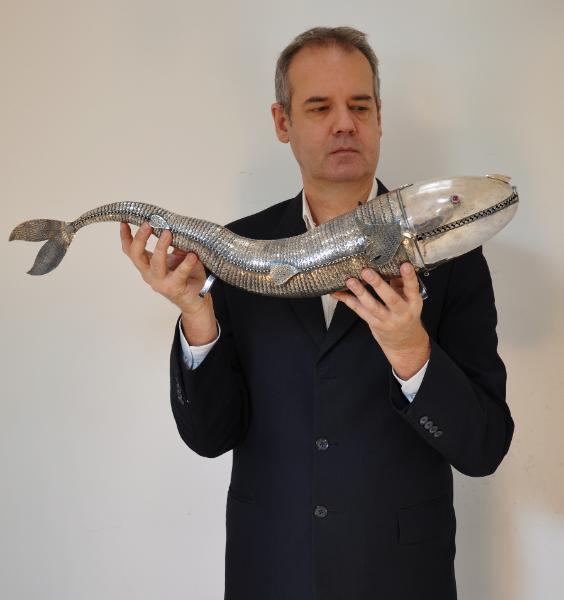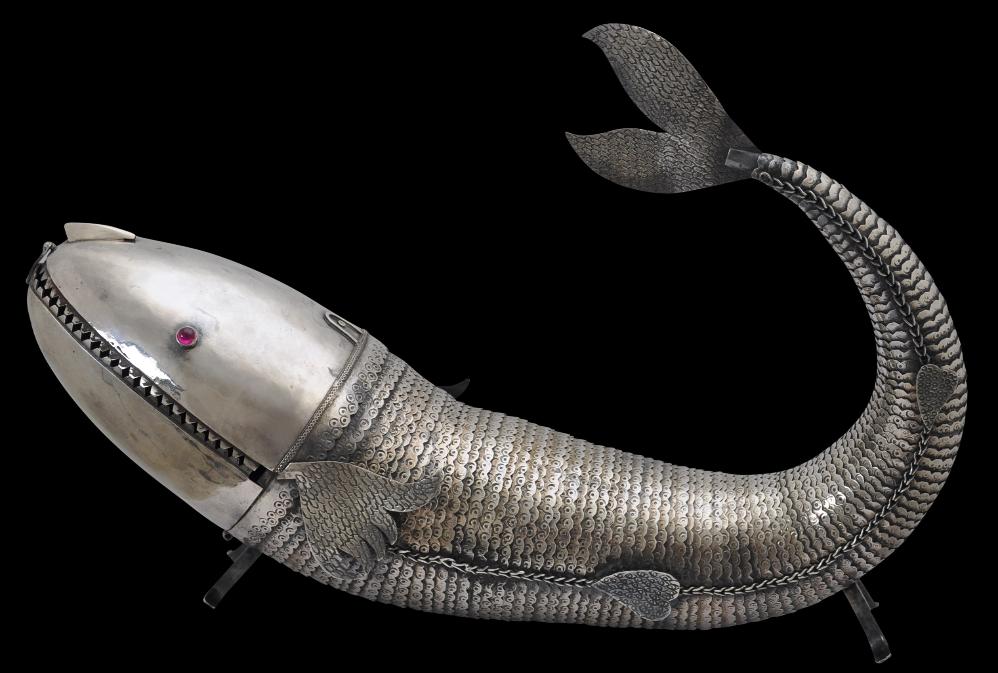
Articulated Silver Fish Representation of Matsya, Avatar of Vishnu, India
Rare, Massive Articulated Silver Fish Representation of Matsya, Avatar of Vishnu
India
18th-19th century
length: 73cm, weight: 2,085g
This rare, museum-quality, massive articulated fish is of solid, high-grade silver and weighs more than two kilograms. It is the largest such articulated fish we are aware of. Certainly, no larger example seems to have been published.
Articulated fish serve a variety of purposes across different cultures and appear to have been made in In Eastern Europe as well as in India. In India, containers shaped as much smaller articulated silver fish served as vermillion powder (
sindoor) containers. Such powder was used for personal adornment and to decorate the household gods. Terlinden (1987, p. 95) illustrates several such small examples and attributes them to 18th-19th century eastern India and the Bay of Bengal.
But the purpose of this fine example is clear: a Vaishnavite
Tilaka or Pundraka symbol in silver on the fish’s forehead indicates that this fish is intended to represent an incarnation or avatar of Vishnu, in Vishnu’s Matsya form.
Matysa is usually listed as the first avatar among the ten primary avatars of Vishnu, and is credited with having rescued the first man (and thereby mankind), Manu, from the great deluge. Matsya can be depicted either as a giant fish (as is the case here), or anthropomorphically with a human torso connected to the rear half of a fish.
The example here comprises a long body of dozens of rings all hinged together and marked with scale motifs. The body has been ‘sewn’ together one either side by silver wire which has been threaded along the length of the body.
There are three sets of ‘fins’ along the body, as well as the prominent tail fin.
The head is large, elongated and bulbous. It is of highly polished and largely undecorated hammered thick sheet silver. There is an applied ‘snout’, and two red cabochon ‘eyes’ in box settings.
The mouth runs the full length of the head and lined with serrated teeth on both the upper and lower jaws. The both is secured by a latch but drops fully open when the latch is loosened.
The silver quality is high and possibly pure: traditionally among observant Hindus, silver was considered a ‘pure’ metal and thus appropriate ritual use.
The fish sits on two pairs of silver feet which have been unobtrusively soldered to the base. These are likely later additions and could be readily removed, however, they do serve to steady the fish for display purposes. The fish can be displayed either fully extended, or with the tail more erect and curled up over the lower body. Either was is sculpturally pleasing.
References
Blurton, T.R., Hindu Art, The British Museum Press, 1992.
Terlinden, C.,
Mughal Silver Magnificence, Antalga, 1987.
Provenance
UK art market
Inventory no.: 3721
SOLD

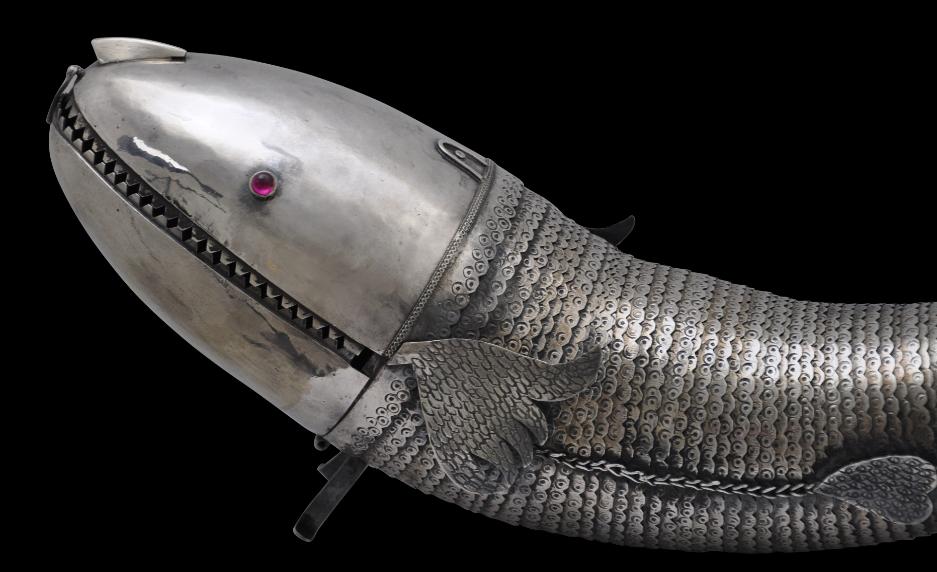
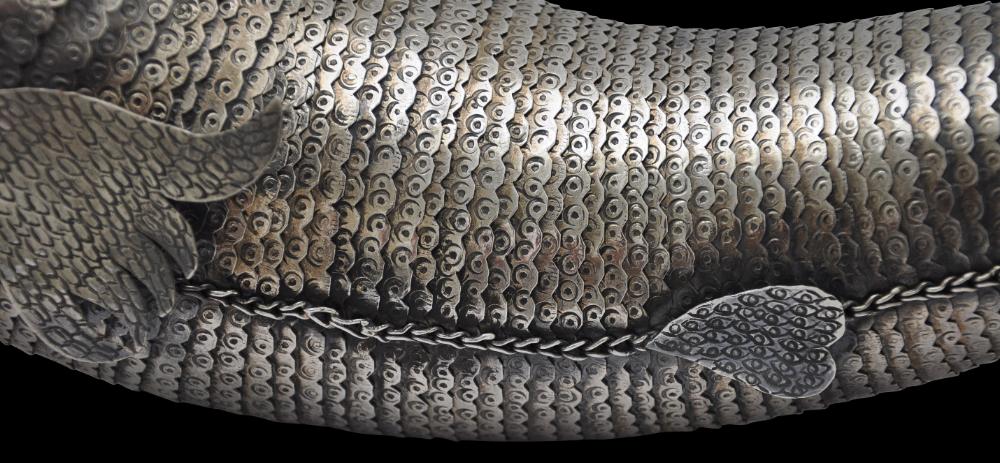
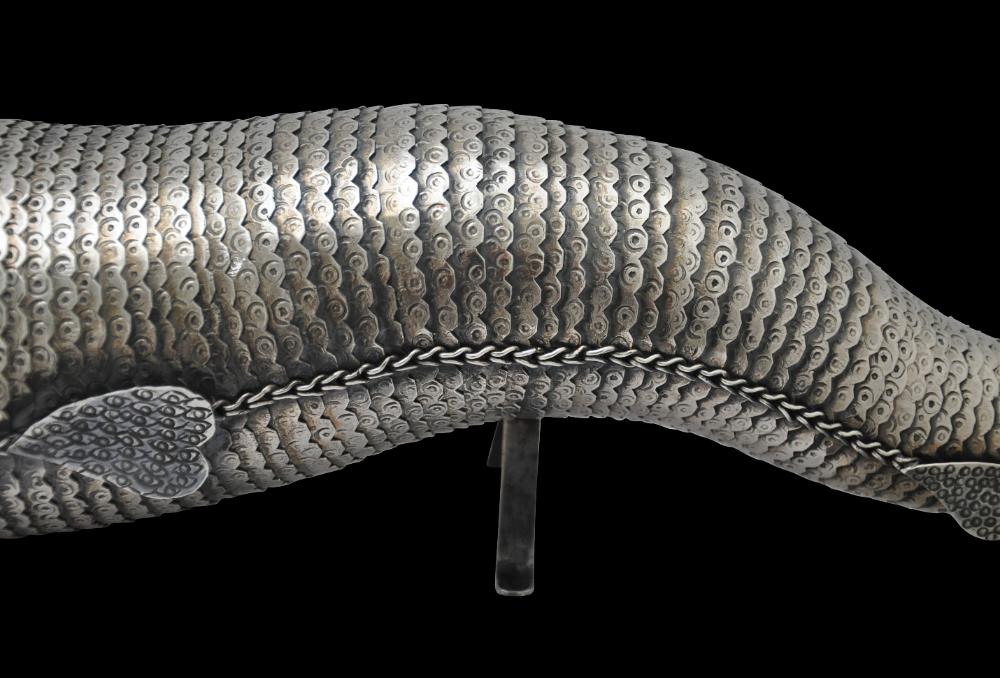
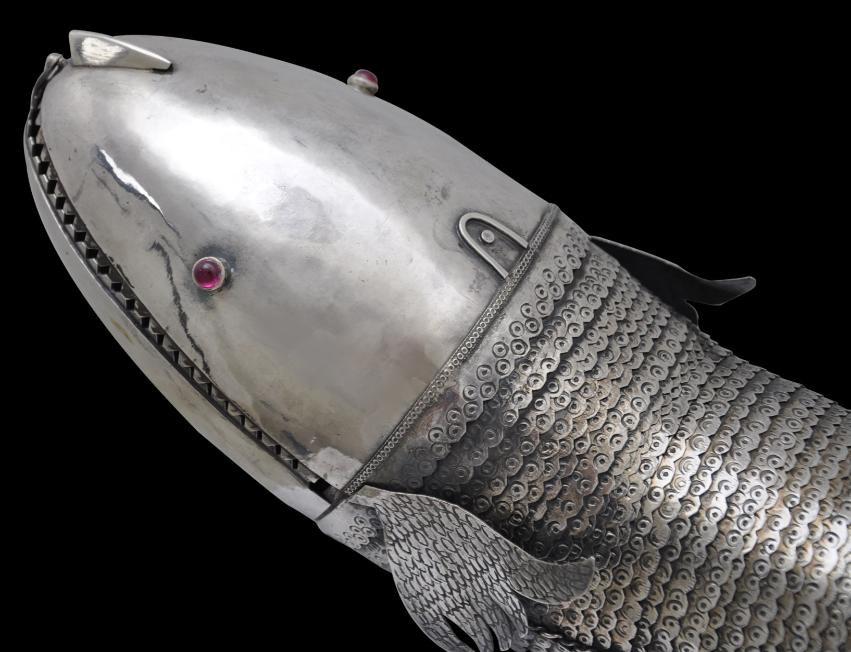

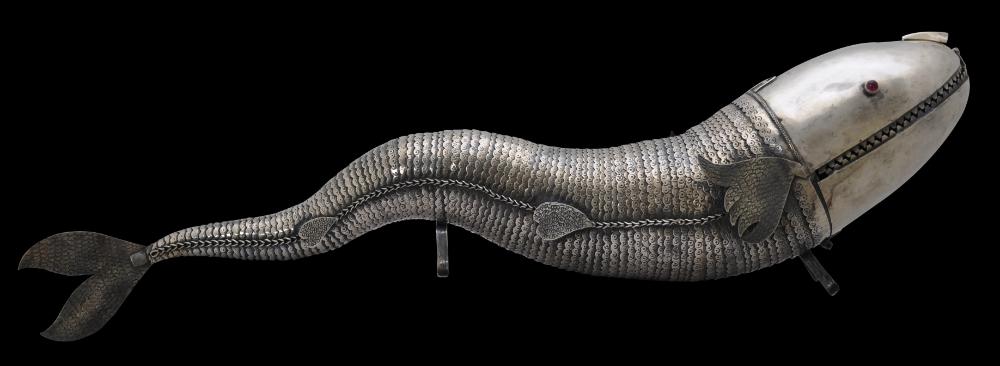
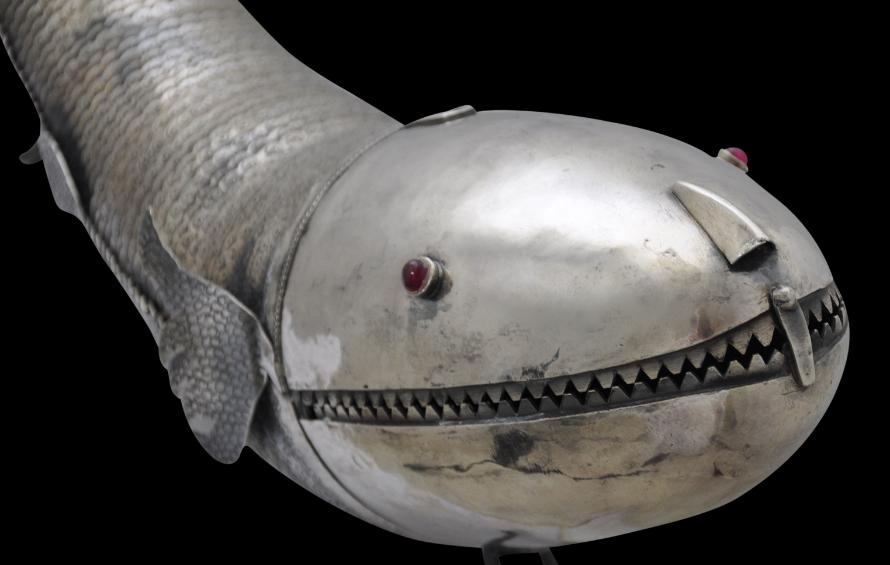
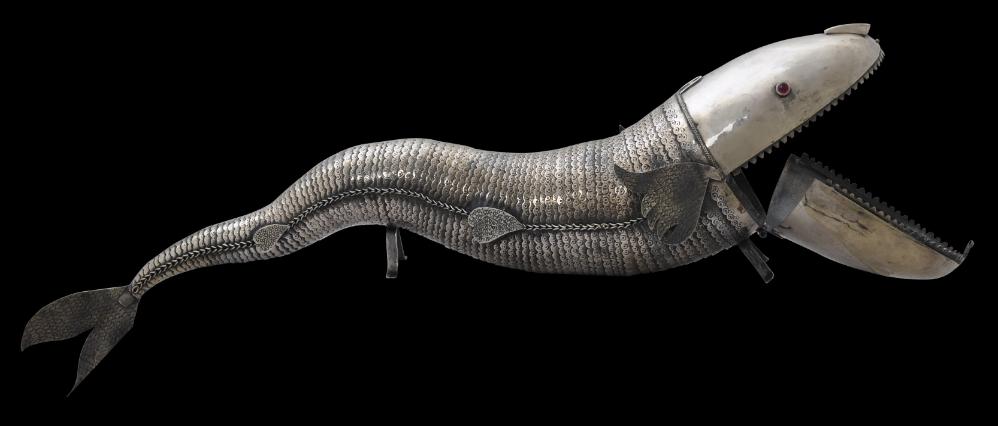

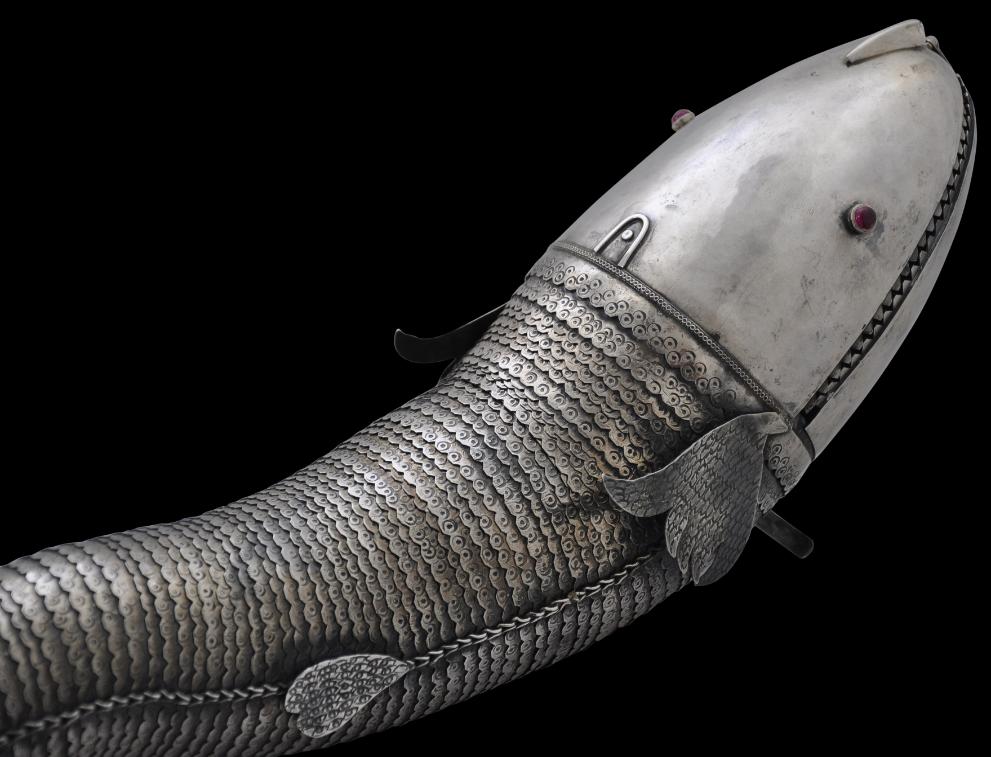
![]()
![]()
